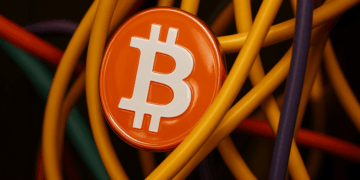

Opinion by: Merav Ozair, PhD
Technology is advancing at the speed of light today more than ever. We have surpassed Moore’s law — computational power is doubling every six months rather than every two years — while regulations are, and have been, playing catchup.
The EU Artificial Intelligence Act just came into force in August 2024 and is already falling behind. It did not consider AI agents and is still wrestling with generative AI (GenAI) and foundation models. Article 28b was added to the act in June 2023 after the launch of ChatGPT at the end of 2022 and the flourishing of chatbot deployments. It was not on their radar when lawmakers initially drafted the act in April 2021.
As we move more into robotics and the use of virtual reality devices, a “new paradigm of AI architectures” will be developed, addressing the limitations of GenAI to create robots and virtual devices that can reason the world, unlike GenAI models. Maybe spending time drafting a new article on GenAI was not time well spent.
Furthermore, technology regulations are quite dichotomized. There are regulations on AI, like the EU AI Act; Web3, like Markets in Crypto-Assets; and the security of digital information, like the EU Cybersecurity Act and The Digital Operational Resilience Act.
This dichotomy is cumbersome for users and businesses to follow. Moreover, it does not align with how solutions and products are developed. Every solution integrates many technologies, while each technology component has separate regulations.
It might be time to reconsider the way we regulate technology.
A comprehensive approach
Tech companies have been pushing the boundaries with cutting-edge technologies, including Web3, AI, quantum computing and others yet to emerge. Other industries are following suit in the experimentation and implementation of these technologies.
Everything is digital, and every product integrates several technologies. Think of the Apple Vision Pro or Meta Quest. They have hardware, goggles, AI, biometric technology, cloud computing, cryptography, digital wallets and more, and they will soon be integrated with Web3 technology.
A comprehensive approach to regulation would be the most suitable approach for the following principal reasons.
A full-system solution
Most, if not all, solutions require the integration of several emerging technologies. If we have separate guidelines and regulations for each technology, how could we ensure the product/service is compliant? Where does one rule start and the other end?
Recent: Animoca Brands revenue climbs as AI cuts costs by 12%
Separate guidelines would probably introduce more complexity, errors and misinterpretations, which eventually might result in more harm than good. If the implementation of technologies is all-encompassing and comprehensive, the approach to regulating it should also be.
Different technologies support each other’s weaknesses
All technologies have strengths and weaknesses, and often, the strengths of one technology can support the shortcomings of the other.
For example, AI can support Web3 by enhancing the accuracy and efficiency of smart contract execution and blockchain security and monitoring. In contrast, blockchain technology can assist in manifesting “responsible AI,” as blockchain is everything that AI is not — transparent, traceable, trustworthy and tamper-free.
When AI supports Web3 and vice versa, we implement a comprehensive, safe, secure and trustworthy solution. Would these solutions be AI-compliant or Web3-compliant? With this solution, it would be challenging to dichotomize compliance. The solution should be compliant and adhere to all guidelines/policies. It would be best if these guidelines/policies encompass all technologies, including their integration.
A proactive approach
We need proactive regulation. Many of the regulation proposals, across all regions, seem to be reactions to changes we know about today and don’t go far enough in thinking about how to provide frameworks for what might come five or 10 years down the line.
If, for example, we already know that there will be a “new paradigm of AI architectures,” probably in the next five years, then why not start thinking today, not in 5 years, how to regulate it? Or better yet, find a regulatory framework that would apply no matter how technology evolves.
Think about responsible innovation. Responsible innovation, simplistically, means making new technologies work for society without causing more problems than they solve. In other words: “Do good, do no harm.”
Responsible innovation
Responsible innovation principles are designed to span all technologies, not just AI. These principles recognize that all technologies can have unintended consequences on users, bystanders and society, and that it is the responsibility of the companies and developers creating those technologies to identify and mitigate those risks.
Responsible innovation principles are overarching and international and apply to any technology that exists today and will evolve in the future. This could be the basis for technology regulation. Still, companies, regardless of regulation, should understand that innovating responsibly instills trust in users, which will translate to mainstream adoption.
Truth in Technology Act
The Securities Act of 1933, also known as the “truth in securities” law, was created to protect investors from fraud and misrepresentation and restore public confidence in the stock market as a response to the stock market crash of 1929.
At the core of the act lie honesty and transparency, the essential ingredients to instill public trust in the stock market, or in anything for that matter.
This act has withstood the test of time — an “evergreen” law. Securities trading and the financial industry have become more digital and more technological, but the core principles of this act still apply and will continue to.
Based on the principles of responsible innovation, we could design a “Truth in Technology Act,” which would instill public trust in technology, internationally, now and in the future. Fundamentally, we seek these products and services to be safe, secure, ethical, privacy-preserving, accurate, easy to understand, auditable, transparent and accountable. These values are international across regions, industries and technologies, and since technology knows no boundaries, neither should regulations.
Innovation may create value, but it may also extract or destroy it. Regulation helps limit the latter two types of innovation, while well-designed regulation may enable the first kind to survive and flourish. A global collaboration may find ways to incentivize innovation that creates value for the good of the global economy and society.
It might be time for a Truth in Technology Act — an international, comprehensive, evergreen regulation for the good of the citizens of the world.
Opinion by: Merav Ozair, PhD.
This article is for general information purposes and is not intended to be and should not be taken as legal or investment advice. The views, thoughts, and opinions expressed here are the author’s alone and do not necessarily reflect or represent the views and opinions of Cointelegraph.













